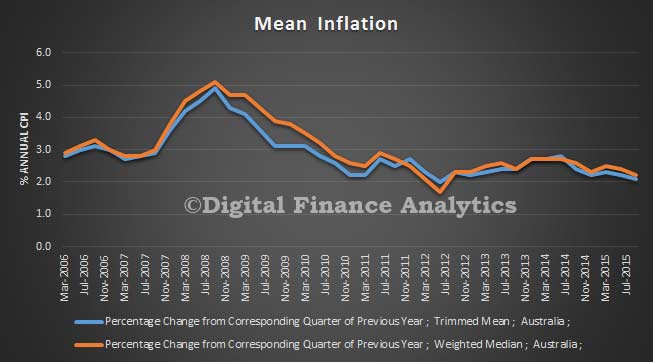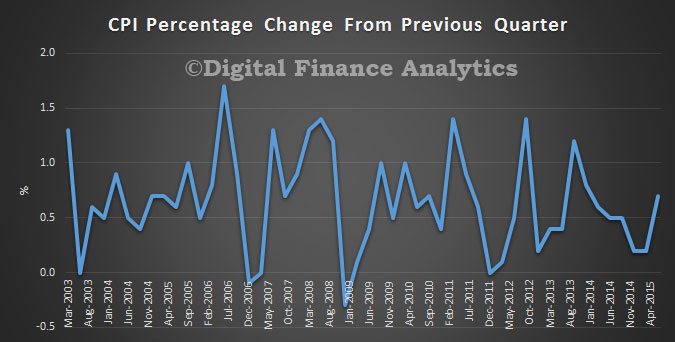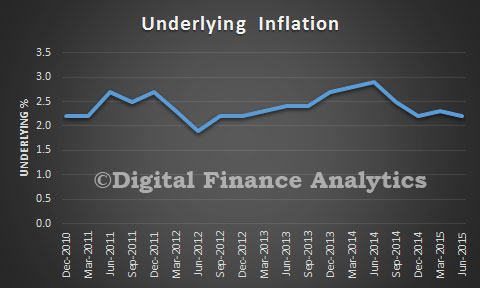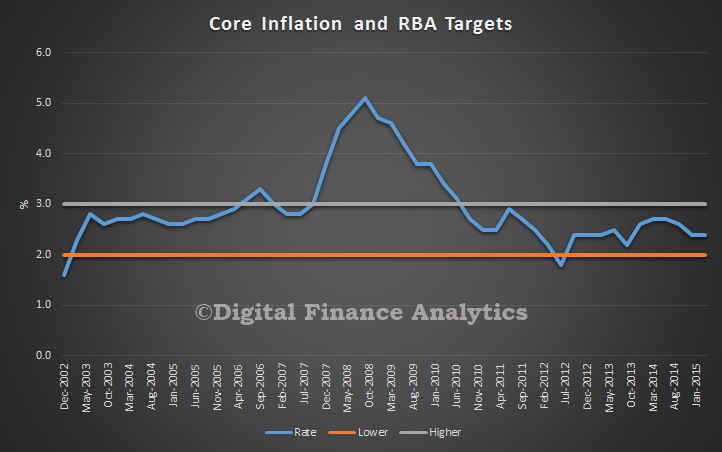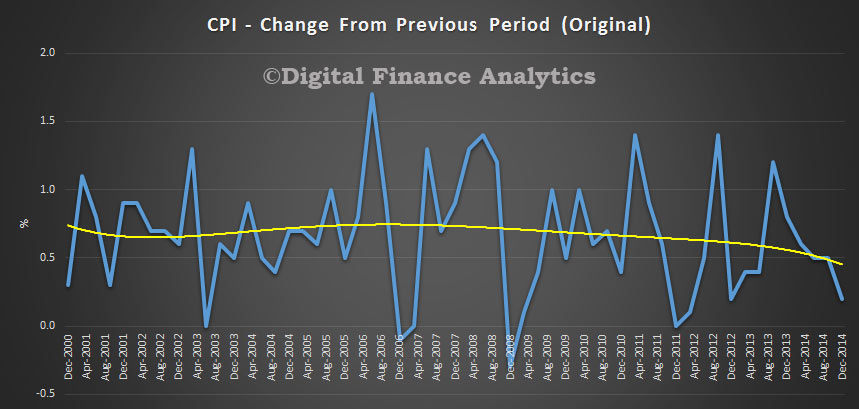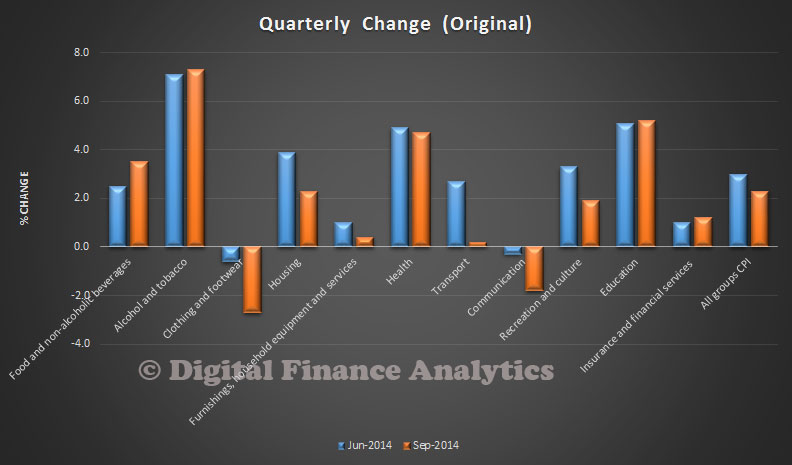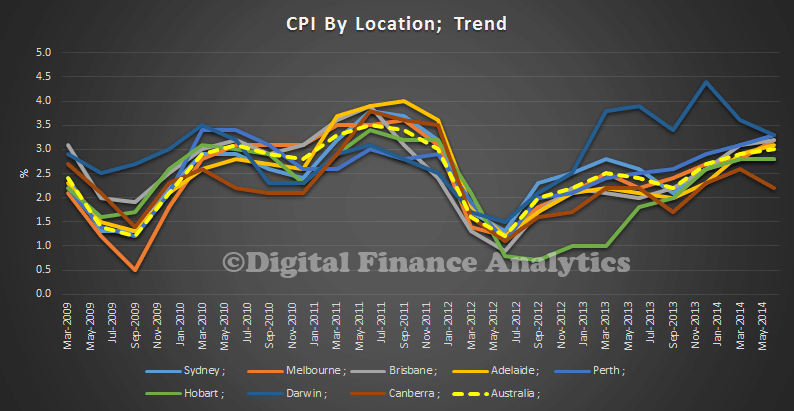The latest Australian Bureau of Statistics (ABS) figures show the Consumer Price Index (CPI) rose 0.5 per cent in the September quarter 2015, following a rise of 0.7 per cent in the June quarter 2015.
The most significant price rises this quarter were in international holiday travel and accommodation (+4.6 per cent), fruit (+8.2 per cent) and property rates and charges (+4.6 per cent), These rises were partially offset by falls in vegetables (–5.9 per cent), telecommunication equipment and services (–2.0 per cent) and automotive fuel (–1.7 per cent).
The CPI rose 1.5 per cent through the year to the September quarter 2015, following a rise of 1.5 per cent through the year to the June quarter 2015.
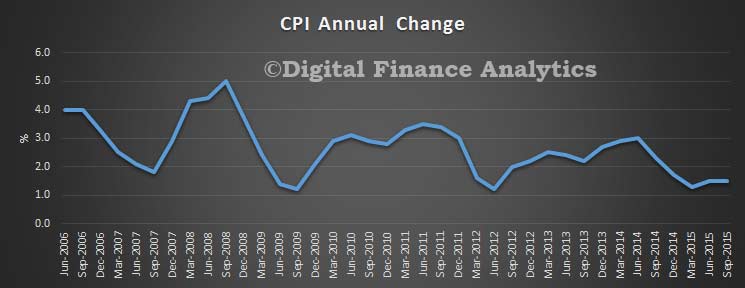 Underlying inflation, using the mean trimmed data, is still within the RBA 2-3% target band, so there is no reason to expect an interest rate cut on this measure in November.
Underlying inflation, using the mean trimmed data, is still within the RBA 2-3% target band, so there is no reason to expect an interest rate cut on this measure in November.

